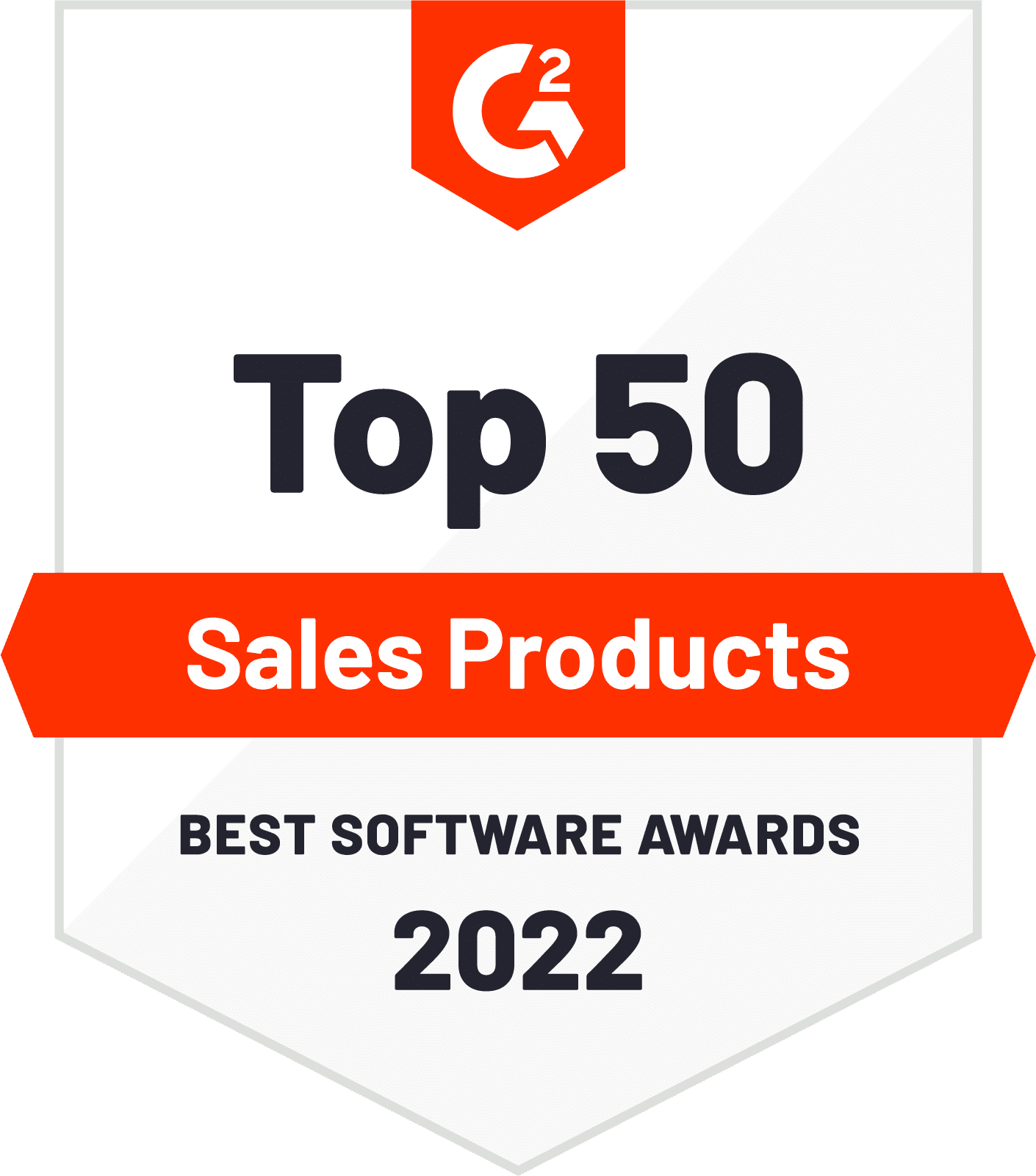
The Best Sales Podcasts to Elevate Your Selling Game in 2024
Looking for the best sales podcasts to boost your numbers and master the art of the deal? With over 10,000 podcasts to choose from, you’ve come to the right place! Whether you’re a rookie learning the ropes or a vet hunting innovative tactics, our curated guide to essential sales podcasts is your ticket to leveling up your sales game. Expect
















Measuring the right sales productivity metrics is crucial for any sales team looking to boost its performance. This guide unveils essential metrics such as lead response time, conversion rate, and quota attainment to help you understand where your team excels and where there’s room to grow. We’ll explore how these metrics can sharpen your sales strategy and improve efficiency.
Key Takeaways
Download Now: The 7 Sales Secrets to Success
Want to know how you can EASILY improve sales productivity metrics by 2x or more? Read our Strategic Seven eBook today!
Get Your Free eBookUnderstanding Sales Productivity Metrics
Sales productivity metrics are your compass in the vast ocean of sales data. They guide you towards your sales goals and help you navigate through the challenges. From tracking the performance of individual sales reps to measuring progress towards sales goals, these metrics play an instrumental role in enhancing efficiency, fostering growth, and improving customer satisfaction.
The beauty of sales productivity metrics, including important sales metrics, lies in their versatility. They encompass a wide array of data points such as:
These metrics allow for the identification of areas in need of improvement, optimization of sales processes, effective resource allocation, and targeted coaching for your sales team.
Measuring sales productivity involves tracking various metrics like average revenue, market penetration, retention rate, and sales rep habits. By analyzing these factors, you can effectively evaluate your sales performance. You can also track leading indicators, the number of conversations with qualified prospects, and deals by stage to measure it effectively.
Having understood the importance of the most important sales metrics, we can now focus on the key ones that your sales team should track.
Key Sales Productivity Metrics to Track
In the quest for increased sales productivity and reduced customer acquisition cost, three key metrics stand out – lead response time, conversion rate by sales funnel stage, and quota attainment. Tracking these metrics can provide valuable insights into your sales operations and help you identify areas that need improvement in your sales pipeline.
We will examine each of these metrics more closely.
1. Lead Response Time
In the high-stakes game of sales, timing is everything. The sooner a sales rep responds to a lead, the higher the chances of conversion. The clock starts ticking the moment a lead shows interest, and every minute that passes can make the difference between winning and losing a potential customer.
But how fast should you aim to respond? According to industry benchmarks, the average lead response time is a whopping 47 hours! Now, that’s an opportunity for improvement. By striving to respond faster, you can stay ahead of the competition and increase customer lifetime value.
Lead response time in a sales context is measured as the average time span between a lead self-identifying and a sales rep promptly following up. Remember, to maximize sales opportunities, every second counts.
Need to learn how to succeed on the road? Read our Field Sales Guide today!
2. Conversion Rate by Sales Funnel Stage
Conversion rate by sales funnel stage is another crucial metric to track. By calculating the conversion rate at each stage of the sales funnel, you can identify bottlenecks and areas for improvement in your sales process. But how do you calculate this conversion rate? It’s simple – just divide the number of prospects who take action at each stage by the total number of prospects at that stage.
The target conversion rates vary at different stages of the sales funnel, but generally, a range around 20-30% is typical. For marketing and sales funnels, it’s 42%, for SDR-sourced leads it’s 59%, and the website visitor to lead conversion rate benchmark is approximately 7%.
To boost your conversion rates, you can:
And remember, tools like Plerdy and Mouseflow can help elevate your conversion rate tracking at every stage of the sales funnel.
3. Quota Attainment
Quota attainment is the ultimate measure of your sales team’s success. By monitoring quota attainment, sales managers can identify top performers and those who may need additional coaching or support. Sales quota attainment is calculated by dividing your total sales by your quota for the given period. Easy, isn’t it?.
To improve sales quota attainment, here are some strategies to consider:
Implementing these strategies can help you increase your sales and achieve your quota.
Remember, falling short of sales quotas can signal a need for better time management and may result in losing valuable customers. Therefore, setting effective sales quotas is crucial for driving business success. Here are some best practices in setting sales quotas:
Incorporate top-down and bottom-up approaches
Involve sales reps and managers in quota-setting discussions
Provide comprehensive coaching and training for sales personnel
By following these practices, you can ensure that your sales quotas are set in a way that maximizes productivity and drives results.
Sales Activity Metrics: A Path to Higher Productivity
Beyond the key sales productivity metrics, there are other metrics that can provide a more granular view of your sales activities. Sales activity metrics, such as the number of calls made, email open and response rates, and meetings scheduled and held, can provide insights into the daily activities of your sales reps.
We will examine each of these metrics more closely.
Use the Revenue Growth Calculator
Curious how an improvement in sales productivity metrics can generate 2X more revenue in 2024? Use our calculator now!
Use the Calculator1. Number of Calls Made
Every call a sales rep makes is a step towards closing a deal. Hence, tracking the number of calls made is crucial for understanding your team’s sales activities. By analyzing call volume, you can uncover patterns like peak times or days with higher call activity, and reveal trends in call outcomes like conversion rates or average call duration.
The number of calls made can be tracked easily by utilizing call tracking software, establishing clear sales KPIs, and closely monitoring key sales call performance metrics.
Remember, more calls do not always equate to higher sales productivity. A higher number of calls made can indicate active sales reps, but it can also reveal opportunities for optimizing the sales process.
2. Email Open and Response Rates
In today’s digital age, email has become a crucial sales tool. Monitoring email open and response rates can provide insights into your team’s email campaigns and their engagement with prospects and customers.
A good open rate typically falls in the range of 20-40%, with the industry average currently at 21.5%. As for response rates, aiming for around 10% is a good start, although this can vary based on factors like email type, with cold emails typically seeing a 1% to 5% response rate.
Boosting email open rates requires a strategic approach. You can improve your open rates by:
3. Meetings Scheduled and Held
Meetings are an integral part of sales operations. They provide a platform for sales reps to discuss strategies, share ideas, and align their efforts towards common goals. Therefore, tracking the number of meetings scheduled and held can provide valuable insights into the productivity of your sales reps.
To maximize productivity, sales meetings should ideally be scheduled and held once a week. If more frequent, keep them brief, between 5-15 minutes, and never exceeding 30 minutes.
Maximizing the productivity of meetings requires a focused approach. Here are some tips to help you achieve that:
Remember, a productive meeting can significantly boost your sales productivity.
Utilizing CRM Tools to Measure Sales Productivity Metrics
In the era of digital transformation, CRM tools have emerged as a potent weapon for sales teams. These tools can help you track and analyze sales productivity metrics, enabling you to make data-driven decisions and improve overall performance.
Using a CRM tool can assist in:
There are several CRM tools available in the market that can help you measure a wide range of metrics including customer churn, net promoter score, customer effort score, rate of renewal, customer retention cost, and expansion revenue. Some popular CRM tools include Salesforce Sales Cloud, NetSuite, Zoho CRM, Pipedrive, Bigin by Zoho CRM, Creatio CRM, Pipeliner CRM, and SugarCRM.
Aligning Sales and Marketing Teams for Maximum Productivity
In the pursuit of sales productivity, the alignment of sales and marketing teams is paramount. These teams are two sides of the same coin. When they collaborate effectively, they can maximize productivity, ensure that both teams are working towards the same goals and using the same metrics.
Achieving this alignment involves:
With the right strategies and teamwork, these challenges can be conquered.
Overcoming Challenges in Tracking Sales Productivity Metrics
While tracking sales productivity metrics can unlock a wealth of insights, it also comes with its own set of challenges. These challenges can range from data overload to lack of standardized processes, and can hinder your team’s ability to effectively track and analyze productivity metrics.
One common challenge is data overload. With a plethora of data at our fingertips, it can be overwhelming to decide which metrics to track. However, by streamlining KPIs and transitioning to a data-driven sales process, you can overcome this challenge and interpret data more effectively.
Another challenge is the lack of standardized processes. Without standard processes in place, it can be difficult to consistently track productivity metrics. However, by implementing standardized processes, you can ensure consistent performance tracking and easily identify areas for improvement.
Setting Goals and Incentives Based on Sales Productivity Metrics
Setting clear goals and incentives based on sales productivity metrics is a powerful motivational strategy. It gives your sales reps a clear target to aim for and a compelling reason to put in their best effort.
Setting goals based on sales productivity metrics can be as simple as focusing on boosting sales productivity. By using sales goals to focus attention and give direction, setting SMART goals based on current sales metrics and KPIs, and using data-driven goals to motivate reps, you can drive your team towards success.
In addition to setting goals, providing incentives can further motivate your sales reps. Some examples of incentives include:
Remember, a motivated sales rep is a productive sales rep, and sales leaders know this well.
Continuous Improvement: Reviewing and Updating Sales Productivity Metrics
The world of sales is dynamic, and so should be your sales productivity metrics. Regularly reviewing and updating these metrics can ensure that you’re always focusing on the most relevant and impactful data points.
Sales productivity metrics should ideally be reviewed and updated on a monthly or quarterly basis, keeping an eye on monthly recurring revenue. This will help you stay on top of your game and drive better results.
Remember, the goal of tracking sales productivity metrics is not just to measure performance but also to improve it. By consistently reviewing and updating these metrics, you can reinforce performance goals, keep your team focused on key sales activities, and provide incentives to achieve goals. It’s essential to track sales metrics to ensure the effectiveness of your sales strategies.
Final Thoughts
In conclusion, sales productivity metrics are the compass that guides sales teams towards success. They provide valuable insights into sales efficiency and effectiveness and help optimize sales processes. From tracking the response time to leads, measuring conversion rates at different stages of the sales funnel, to monitoring quota attainment, these metrics play a pivotal role in the success of a sales team.
Sales is a dynamic field, and to stay ahead, teams must continuously review and update their sales productivity metrics. After all, the goal is not just to measure performance but to improve it. So, are you ready to unlock your sales team’s full potential with sales productivity metrics?
Frequently Asked Questions
How do you calculate sales productivity?
To calculate sales productivity, divide the total sales revenue by the total number of employees. For example, if you had a sales revenue of $5,000 in February with five employees, your sales productivity would be an average of $1,000 per employee.
What is a sales performance metric?
A sales performance metric evaluates the quality and efficiency behind raw sales numbers, providing deeper insights into the sales process. It helps track progress toward goals, adjust sales compensation, and identify strategic issues.
What is sales productivity index?
The sales productivity index measures the efficiency and effectiveness of a salesperson or team, reflecting how well they utilize their time, resources, and skills to generate revenue. Aim for high sales productivity, indicating more results with less effort and cost.
How do you measure sales rep performance?
To measure sales rep performance, you can consider factors such as quota attainment, win rate, conversion rate, sales cycle length, open opportunities, closed opportunities, qualified leads, and lead response time. These metrics will help you evaluate their effectiveness and identify areas for improvement.
What are some challenges in tracking sales productivity metrics?
Tracking sales productivity metrics can be challenging due to data overload and lack of standardized processes. The key to overcoming these hurdles is streamlining KPIs and implementing standard processes. Keep pushing forward!